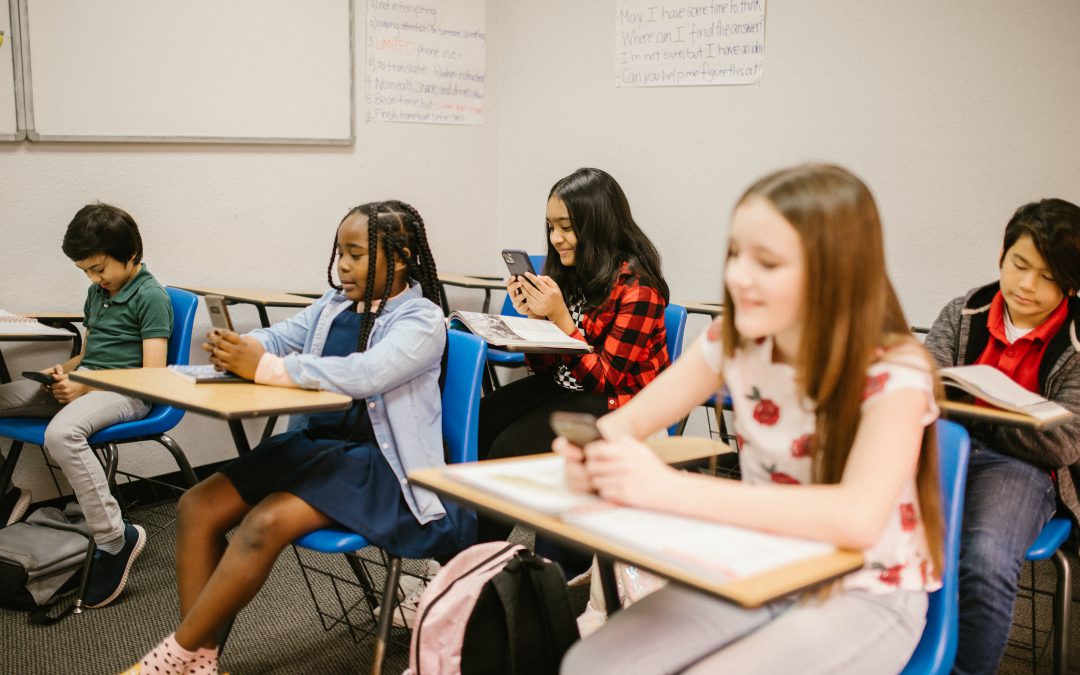Technology offers students a world of opportunities, many of which are beneficial. Students can access information at the touch of a finger. They can also find ways to supplement learning and explore their interests. However, these benefits come with psychological, emotional, and even physical dangers. On one hand, some students experience physical damage from repeated technology use. This may include injuries from repetitive motion and poor ergonomic positioning. On the other hand, students face psychological damage as well. In order to make sure students develop healthy digital habits, it’s important to teach digital wellness in schools. The Heartland Area Education Agency defines Digital Wellness as “the elements of physical and psychological well-being related to digital technology use.”
Physical Damage from Technology Use
The Puget Sound Chapter of the Human Factors and Ergonomics Society (PSHFES) warns of the physical risks of computer use. According to the PSHFES, over half of middle school students report pain due to technology use. Moreover, the PSHFES states that, according to research, this kind of pain has lasting effects on children. In fact, it may even indicate an increased risk of injury in adulthood. Why do so many students experience pain from technology use? According to the PSHFES, the majority of students use computer equipment and set-ups that aren’t designed for their stature. This means that younger students have to adopt awkward postures and positions. This puts them at even higher risk of injury and physical discomfort.
How Can Schools Protect Students from Physical Damage when Using Technology?
In order to avoid pain and injury, students need to know how to safely use computers and workstations. The PSHFES developed an outreach program, Technically Cool Computing (TCC), to teach students just that. TCC is a brief learning activity that can have lasting positive effects on a student’s health and well-being. Following ergonomic principles, students learn to recognize and correct postures that put them at risk of pain and injury. In fact, in pilot studies, all of the students who went through the TCC program were able to identify postures that put them at risk. They were also able to correct these postures successfully. Educators can download the TCC Activity Kit from the PSHFES website. These materials include a PowerPoint presentation and a video guide to using the program in the classroom.
Psychological and Emotional Damage from Technology Use
Students face emotional and mental harm from technology as well. We often focus on how technology makes tasks easier, saving us stress. However, technology can actually increase stress levels – and significantly. According to an American Psychological Association (APA) survey, 86% of adults say they constantly check their devices. This increased connectivity increases stress. And it isn’t just adults who feel this way. The APA also found that among parents, 94% had to limit their children’s access to devices in some way.
Also, 58% of parents worry that technology, especially social media, harms their children’s mental and physical health. One major issue? Addiction. According to a CNN/Common Sense Media poll, over half of the teenagers asked said they feared they were addicted to their cell phones. That poll took place in 2016 – long before the pandemic led to increased cell phone use. Furthermore, researchers from University of Illinois at Urbana-Champaign found that addiction to cell phones leads to increased rates of depression and anxiety.
What’s the Best Way to Teach Digital Wellness in Schools?
The International Society for Technology in Education (ISTE) suggests a three-step process to help students maintain digital wellness. First, the ISTE suggests opening the floor for discussion. Simply talking about how their digital habits affect their well-being is the first step towards digital wellness. Through thinking and talking about their habits, students practice metacognition. This helps them become more aware of their online behavior. It will also help them become more aware of how time spent online affects them. For instance, the ISTE suggests having students track whether or not they’re actually happy when online. Also, they suggest that students track their anxiety – or FOMO – when not online.
Next, the ISTE suggests leading students to think positively about their online and offline lives. It’s important for students to connect both parts of their lives and to think through how time spent online can help them reach offline goals. Finally, the ISTE recommends a series of activities to help students build healthier online behaviors and habits. These activities can be as simple as adjusting blue light settings to improve sleep patterns. Another idea is to schedule deviceless study sessions with timed breaks for checking social media or playing games.
It’s important to recognize that technology is an integral part of life. As such, the goal isn’t to avoid technology entirely but to learn how to use it safely and responsibly. Schools can support safe, responsible technology use by adopting screen monitoring software, like LearnSafe, to work with content filters. LearnSafe encourages metacognition and self-awareness, teaching students to be more mindful of what they do and say online. This builds digital citizenship skills, helping students to avoid risky online behavior and to develop healthy digital habits.


